Notes
Enabling ISIS, the VICE Videos and the Execution of AFP Videographer James Foley
Yesterday, I was shocked and sickened to hear (and see excerpts from the video) of the execution of AFP text reporter and video journalist, James Foley. And yet, I wasn’t surprised.
Back on July 1st, I wrote a post entitled: More Questions Over Ethics: Is Reuters Enabling ISIL and are they Working with Sympathizers Again? In that piece, I discussed the tide of images appearing on the newswire that showed ISIS fighters preening for the news camera, sometimes (variations on a theme) waving their ominous black-and-white flag, other times parading around in vehicles after claiming another Iraqi city or town.
In that post, I questioned the terms by which these photos were acquired and to what extent unnamed stringers, in concert with Western photo agencies, were trading this triumphalist exposure for access.
Clearly worried about the integrity of photojournalism, I have also been concerned about official and international concern for and safeguarding of the photojournalist. That was the point of this July 15th post about the killing of a journalist in Gaza by an Israeli airstrike. If the journalist was in a car clearly marked “TV,” the event passed with little to show for it but a frame or two on the Getty sales site.
Taking in the grotesque scene, but just as much, that imperious and despotic tone in the Foley propaganda killing execution video as these figures once again hold stage, it seems the two issues have converged. The takeaway, to a group like ISIS, seems to be: Western media is all too willing to patronize us, and life (like a photographer is anything more than a tool) is cheap.
The week before last, Foreign Policy ran a post, the title of which now seems horribly prescient, even if the wording at the time (in this click hungry and SEO-savvy media environment) seemed all-too gratuitous. It was titled: How to Take a Picture of a Severed Head, and was subtitled: “What are major news organizations doing sending jihadi-approved photos from inside the Islamic State?” Although the first part of the post built on our “enabling” post linked above, it went on to cite photographers in Iraq who had produced some of the ISIS images acquired by the major media. The accounts weren’t pretty, describing threats and intimidation if those photographers didn’t tow the line.
The thrust of that story focused on the latest, and certainly the most adventurous and robust imagery from “inside ISIS.” That is, the multipart video series produced for VICE by a producer who essentially embedded with the organization.
To be sure, there is a grey area between reporting and collusion, between reporting and enabling, between reporting and being used as a pawn for the dissemination of propaganda. My Reuters piece, for example, received some justifiable critique for failing to more clearly delineate between those terms. Others, of course, have spelled out the precedents for embedding, the sometimes fine balance between censoring versus enabling, as well as the value and media principles of showing us both the despicable and the despised. Patrick Baz, AFP’s photo manager for the Middle East and North Africa (this, the same agency that James Foley worked for) makes the case most graphically in “What to do with horrific images from Iraq,” the AFP blog post illustrated by the ISIS execution images that circulated last June.
But still, how clear is the line between news and propaganda, especially with such accomplished “mad men?”
The distinction to be drawn is how much the photographers or videographers, granted access, are flies on the wall and observe/document activity that ISIS would have been engaged in whether there was a camera there or not. That’s very different than ISIS being mindful of the cameras and behaving in a “performative” way. That’s not to say that embedded photographers take plenty of portraits of soldiers posing, and armies are mindful and, most likely, calibrating their behavior, given the presence of a photographer. In the case of ISIS, however, it feels like these terms have been radically skewed with the intent to intimidate, and, ultimately, subvert the “contract to witness.”
With all this in mind, I’m quite uncomfortable with the VICE videos, especially when their head of news programming refused to disclose the terms upon which they were created. Do the VICE videos provide context, the video producer on hand establishing himself as an embed and a documentarian? Yes, they do. At the same time, however, how much was VICE there for the sensation and to enhance their own scintillating brand?
From the article linked just above:
“Kevin Sutcliffe, Vice’s head of news programming in Europe, told The Huffington Post that the organization wanted to do something on the Islamic State “that would feel more like Vice…”
To the extent the imagery (the scenes in this post pulled just from the first video of the series), blurs roles, is as voyeuristic as it is informative and hardly struggles to contain and contextualize the performance, I’d say it crosses over.
I’m not sure what it means to introduce one’s guide so overtly as a press officer and then suddenly document how, without any qualm or qualification, he grabs his weapon and turns into a fighter. Perhaps, in the name of jihadi public affairs, we should be that flexible. (Before one chalks it up to some lack of sophistication, however, keep in mind how ISIS’s sophistication with media, technology and military affairs — 1, 2 — is truly mind boggling.)
Most specifically, though, what concerns me are the 3+ minutes of video VICE offered (6:40 – 9:29) introducing the new head of the Caliphate to the world, Abu Bakr al-Baghdadi. The words of the speaker (“You have to support him by paying your money, sacrificing your life, and anything you can do”) suggest that the citizens of Raqqa are feeling liberated. The VICE narrator confirms this fact, saying: “This is clearly a message that resonated with the crowd on hand.” But, their town newly captured and with armed ISIS fighters circling all around, it’s concerning how much the citizens, and those faces, seem to demur.
Perhaps not showing these insider scenes of ISIS could be argued as censorship — denying people a view of what barbarians they are. At the same time, however, where are the ethics and the boundaries when the media engagement is so passive, even acquiescent, and the product, so indistinguishable from propaganda that the insurgents feel they can have their way with the exposure? And as significant for the authority of our journalism and the safety of our journalists, how does that license and that entitlement inform the execution of James Foley?
update 8/24: corrected to properly reflect James Foley’s role as a text reporter and video journalist, not a photojournalist.
(screenshots: VICE: Inside Isis. TV photo: Mustafa Hassona/Anadolu Agency/Getty Images. fighter photo: Reuters/Stringer, caption: A fighter of the Islamic State of Iraq and the Levant (ISIL) holds an ISIL flag and a weapon on a street in the city of Mosul, June 23, 2014.)
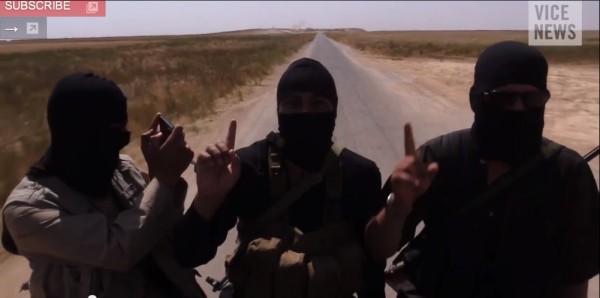
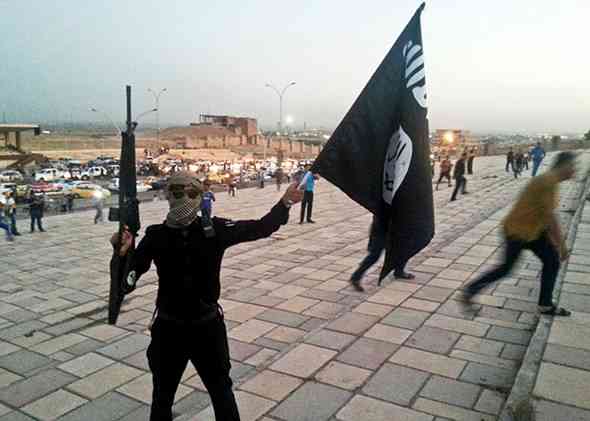
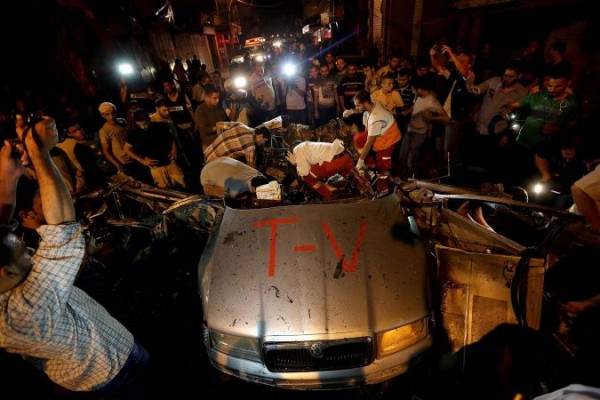
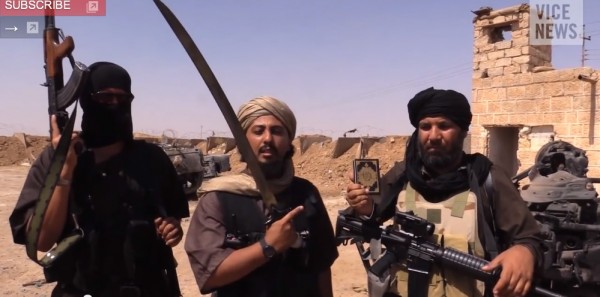
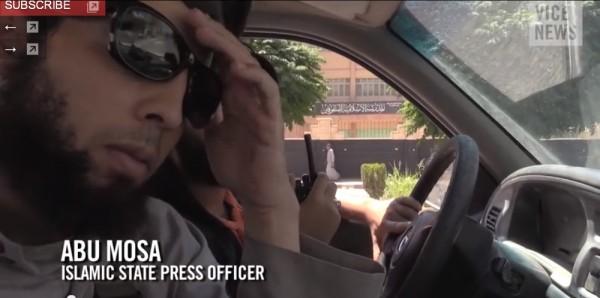
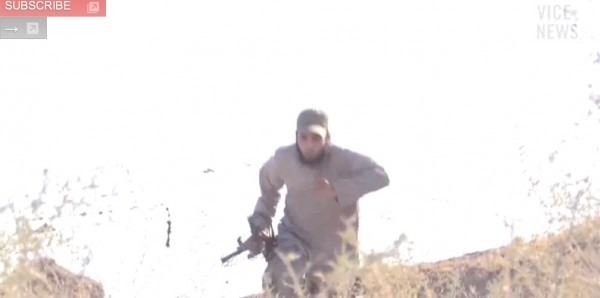
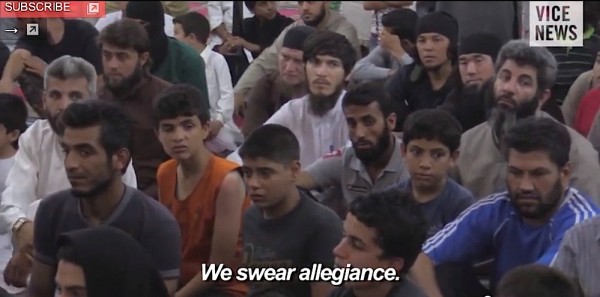
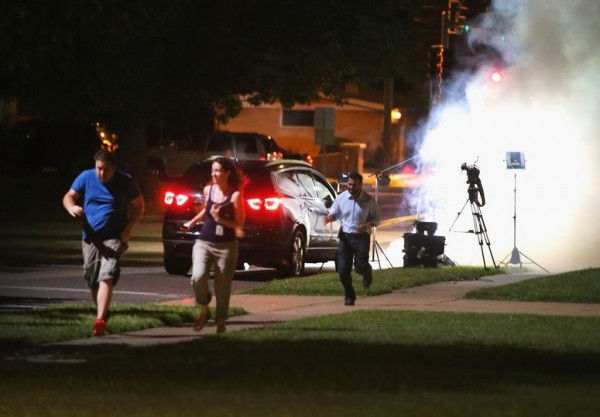
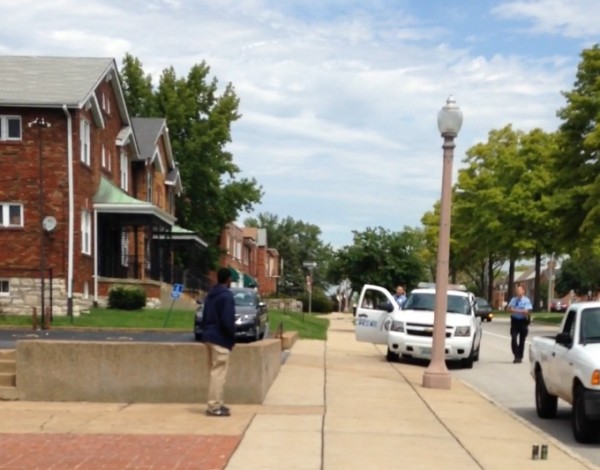
Reactions
Comments Powered by Disqus